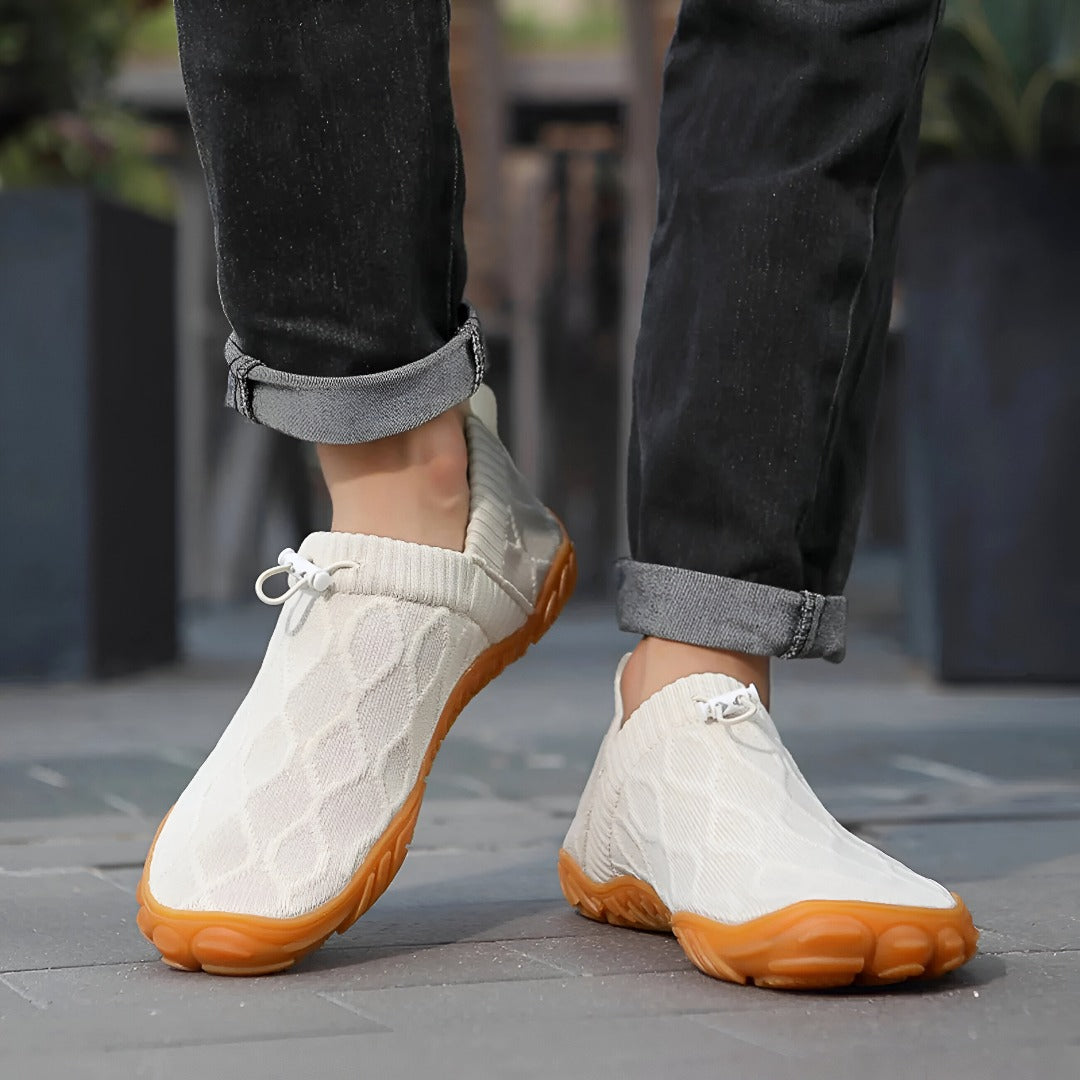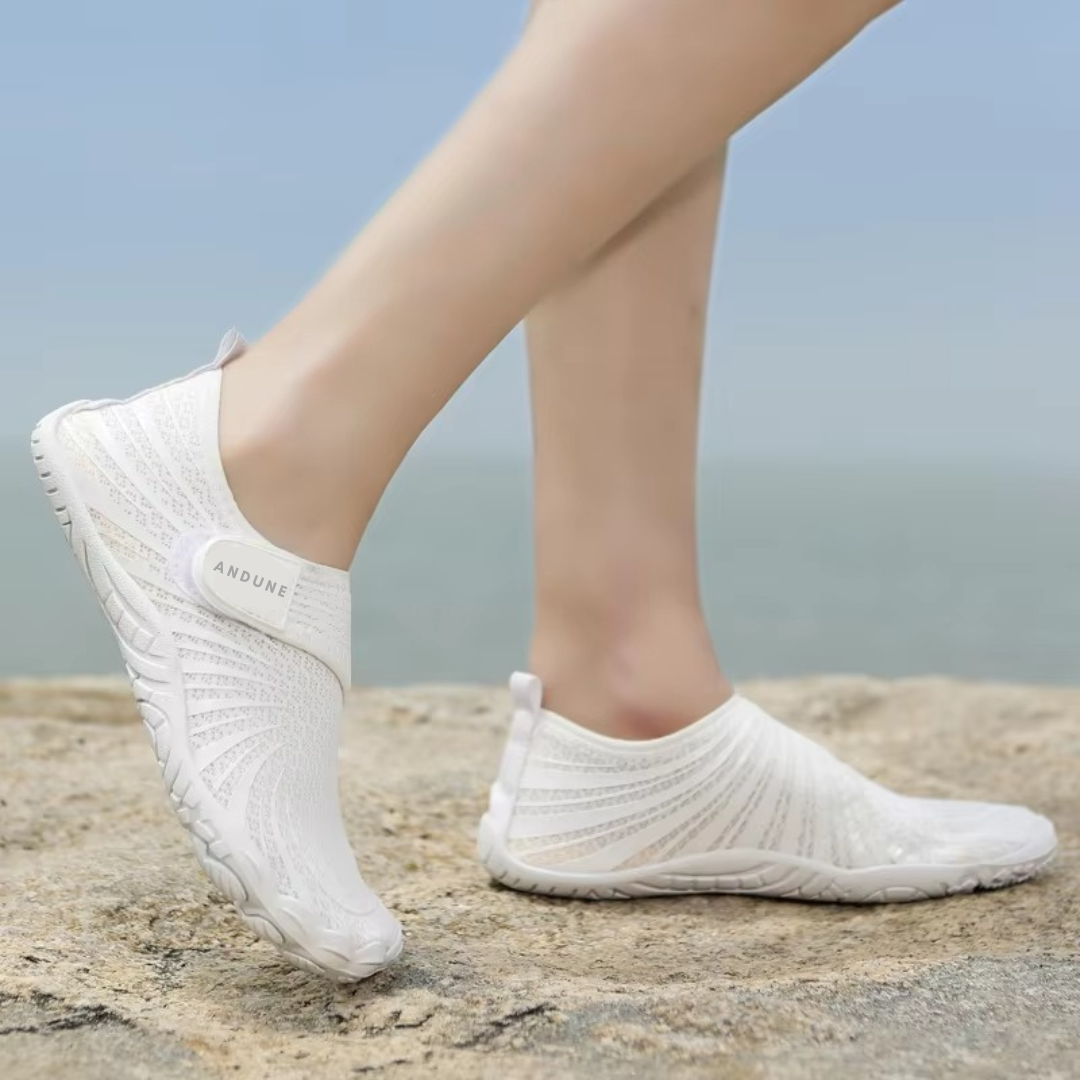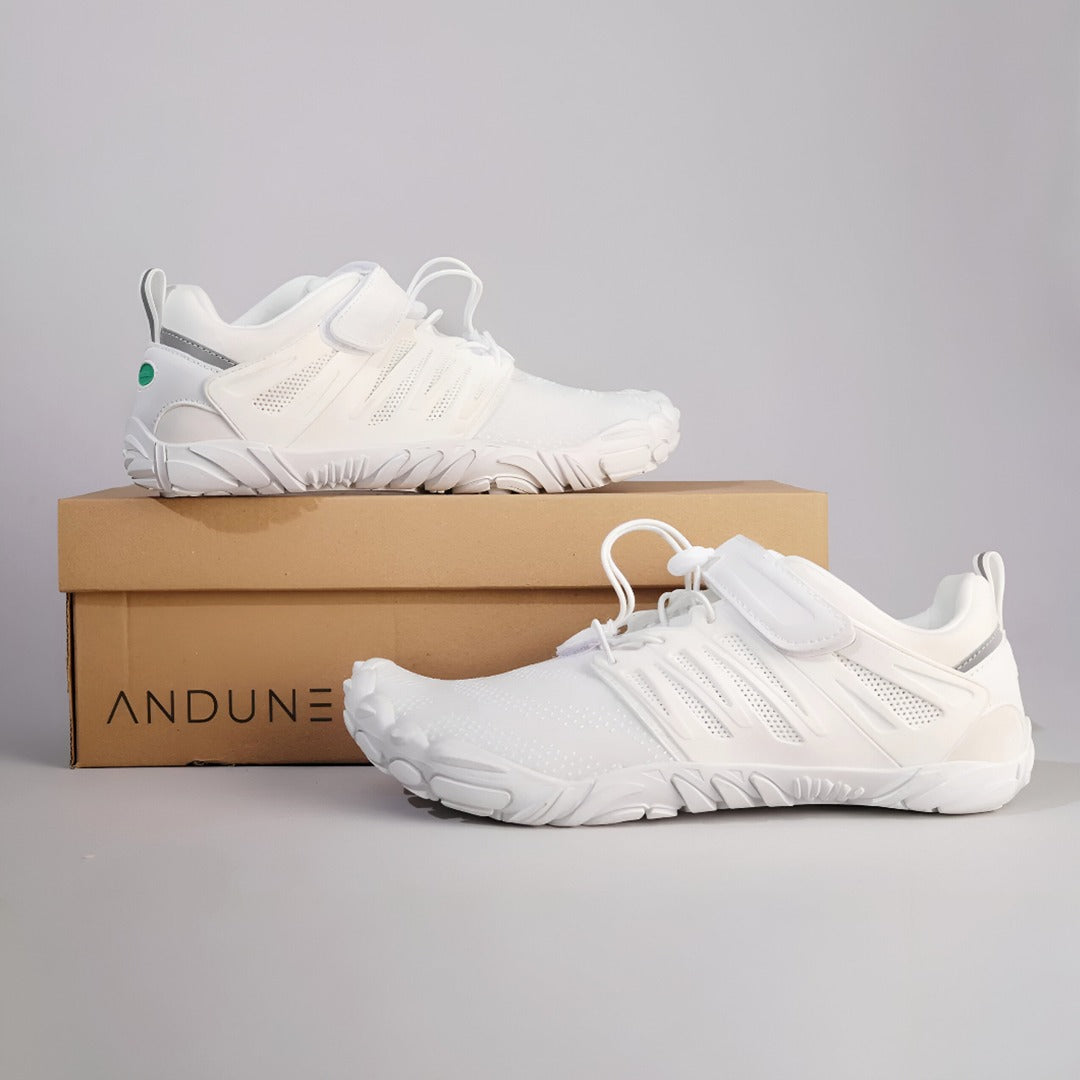If you're doing a combination of gym workouts, functional training, running, agility drills, or even taking a long walk on a treadmill or outdoor hiking, it may be time to move away from a normal pair of running shoes. Enter: cross-training shoes - all-around footwear that is made for a large variety of movements and training stimuli.
Cross-training shoes may not all look the same, and understanding which shoes can help you make the most of all your foot strength, balance, and mobility will help you pick the right cross-training shoes for your body. To Andune, we are revolutionizing men's cross-training shoes in a barefoot form that revitalizes the feet. In this blog, we will explore what a cross-training shoe means, why to concern oneself with quality cross-training shoes, and how to find the best types of shoes for you!
What Are Cross-Training Shoes?
Cross-training shoes are a hybrid footwear category built to support a range of physical activities. Unlike running shoes (which are designed for forward motion) or lifting shoes (which offer rigid soles for stability), cross-trainers offer multi-directional support, flexibility, and durability—allowing you to jump, lift, sprint, pivot, and stretch without switching your footwear.
They are ideal for:
-
Gym workouts
-
HIIT & circuit training
-
Functional fitness
-
CrossFit
-
Strength and agility drills
-
Light trail or outdoor fitness
The best cross-training shoes offer balance between cushioning, stability, grip, and flexibility—helping you transition seamlessly between diverse exercises.
Why You Need the Right Pair
Wearing the wrong shoes for multi-discipline training can lead to more than discomfort—it can increase your risk of injury. Running shoes, for example, often have elevated heels and lots of cushioning, which can be unstable for strength training. Lifting shoes, on the other hand, aren’t built for cardio or lateral movement.
This is why barefoot shoes like the ones offered by Andune are game-changers—they provide your feet the room, freedom, and strength to perform naturally across different activities.
Barefoot-Style Cross Training: Why It’s Better
At Andune, our men’s cross training shoes take the barefoot approach seriously, and here’s why:
-
Wide toe box: Your toes can spread naturally for balance and grip during lifts, lunges, or jumps.
-
Zero drop: Heel and toe are on the same level, improving posture and weight distribution.
-
Flexible sole: Encourages full range of motion and foot engagement.
-
Lightweight: Feels natural and fast, especially during agility drills and high-impact exercises.
Unlike overly cushioned shoes that disconnect you from the ground, barefoot shoes provide proprioceptive feedback—letting your brain and feet work in sync. The result? Stronger foot muscles, better balance, and more natural movement.
Key Features to Look For in Cross Training Shoes
When selecting your ideal training companion, look for these essential features:
1. Stability and Grip
You need solid grip for explosive movements and compound lifts. A stable base reduces injury risk during squats, kettlebell swings, or box jumps.
Andune’s barefoot sole design offers excellent traction while allowing your foot to ground naturally—crucial for both strength and agility.
2. Toe Room
Cramped toes mean compromised balance and muscle engagement. Choose a wide toe box design that lets your toes spread and stabilize.
3. Flexibility
Whether you're lunging, stretching, or sprinting, your shoe should move with your foot. Andune’s flexible, minimal sole supports full range of motion—especially important during compound moves.
4. Minimal Heel-to-Toe Drop
Most running shoes have an elevated heel that alters your natural gait. A zero-drop shoe encourages better posture and more grounded movement—ideal for lifting and functional training.
5. Durability
Cross-training puts your shoes to the test. You want materials that can handle abrasion, high intensity, and varying surfaces.
Andune shoes are built for both the gym and the outdoors—light enough for cardio, yet tough enough for rope climbs or mountain trails.
When Should You Use Cross-Training Shoes?
Use your men’s cross training shoes for:
-
Weight training sessions (deadlifts, squats, overhead presses)
-
High-intensity interval training (HIIT)
-
Bodyweight strength workouts
-
Cardio sprints or agility drills
-
Outdoor workouts or functional fitness sessions
-
Yoga or mobility sessions
Avoid wearing them for long-distance running or cycling—those activities need sport-specific support. But for everything else in between, a good pair of cross-trainers becomes your go-to.
Why Choose Andune?
Andune isn’t just another shoe brand. We’re on a mission to restore natural movement, one barefoot-inspired step at a time. Our men’s cross-training shoes are designed to:
-
Strengthen your feet, not weaken them
-
Improve your posture and muscle activation
-
Deliver all-day comfort without compromising on performance
With feedback from athletes, gym-goers, and everyday movers, our barefoot shoes are built for real-world movement—not just Instagram aesthetics.
Final Thoughts
Cross-training demands a shoe that’s as adaptable as you are. And when it comes to unlocking your true performance potential, traditional padded shoes simply don’t cut it. The barefoot cross-training shoe combines stability, freedom, and feedback—helping your feet do what they were always meant to.
Whether you're lifting in the gym, jumping into a HIIT circuit, or climbing a trail, Andune’s barefoot cross-training shoes are designed to move with you—every rep, every step.
Ready to uncage your feet and train better? Explore our collection at https://andune.in



